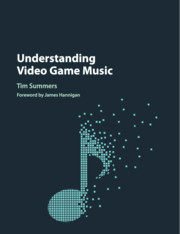Book contents
- Frontmatter
- Dedication
- Contents
- List of Figures, Musical Examples and Tables
- Foreword
- Acknowledgements
- Introduction: Beyond the Candelabrum
- PART I ANALYSING VIDEO GAME MUSIC
- PART II CRITICAL PERSPECTIVES
- 3 Texturing and the Aesthetics of Immersion
- 4 Music and Virtual Game Worlds
- 5 Communication for Play
- 6 Hollywood Film Music and Game Music
- 7 Musical Play and Video Games
- Epilogue: Fun, Play and Music
- Appendix: How to Hear a Video Game: An Outline
- Bibliography
- Ludography
- Index of Games
- General Index
7 - Musical Play and Video Games
from PART II - CRITICAL PERSPECTIVES
Published online by Cambridge University Press: 05 September 2016
- Frontmatter
- Dedication
- Contents
- List of Figures, Musical Examples and Tables
- Foreword
- Acknowledgements
- Introduction: Beyond the Candelabrum
- PART I ANALYSING VIDEO GAME MUSIC
- PART II CRITICAL PERSPECTIVES
- 3 Texturing and the Aesthetics of Immersion
- 4 Music and Virtual Game Worlds
- 5 Communication for Play
- 6 Hollywood Film Music and Game Music
- 7 Musical Play and Video Games
- Epilogue: Fun, Play and Music
- Appendix: How to Hear a Video Game: An Outline
- Bibliography
- Ludography
- Index of Games
- General Index
Summary
In the last chapter, we discussed interaction as a quality that distinguishes video games from sibling moving-image fiction media such as film and television. Games share this interactivity with musical performance, for which it is a prerequisite for musical output; as schoolteachers are fond of saying when reprimanding unruly students, ‘instruments don't make sounds on their own’. We will deal with theories about play more generally in the epilogue, but first, this chapter explores the intersection of musical play and game play. I here consider the senses and situations in which to play video games is to play music.
Musical Interfaces and Musical Performance
As we saw with Loom (1990) in Chapter 3, it is not uncommon for games to involve virtual musical (especially instrumental) performance. In Loom, the players’ musical activity is part of their interface with the game world and it is an unavoidable part of the gameplay. One cannot play Loom without playing music. Throughout the video game landscape, there are many more examples of such musical interaction. Perhaps one of the most famous incarnations of musical performance as a game interface is in The Legend of Zelda: Ocarina of Time (1998). The hero, Link, plays the titular instrument, directed by the player using pitch-assigned buttons on the gamepad. Much like Loom, the player learns particular melodies from other characters throughout the game, which, when played by Link, have certain effects, such as calling the hero's horse, changing day to night, prompting rain and so on. To play the song in question, the player does not need accurate rhythms – it is only the order of pitches that is required – nevertheless, once a recognized pitch sequence is input (representing the first part of the melody), almost like an auto-correction system in a word processor, Link will subsequently play the melody with the correct timing and complete the tune that the player began.
One might cynically view the musicality of the Zelda ocarina as entirely irrelevant to the game mechanic – it might as well be a random string of button-presses. Two aspects of the game counteract this perspective.
- Type
- Chapter
- Information
- Understanding Video Game Music , pp. 178 - 200Publisher: Cambridge University PressPrint publication year: 2016



